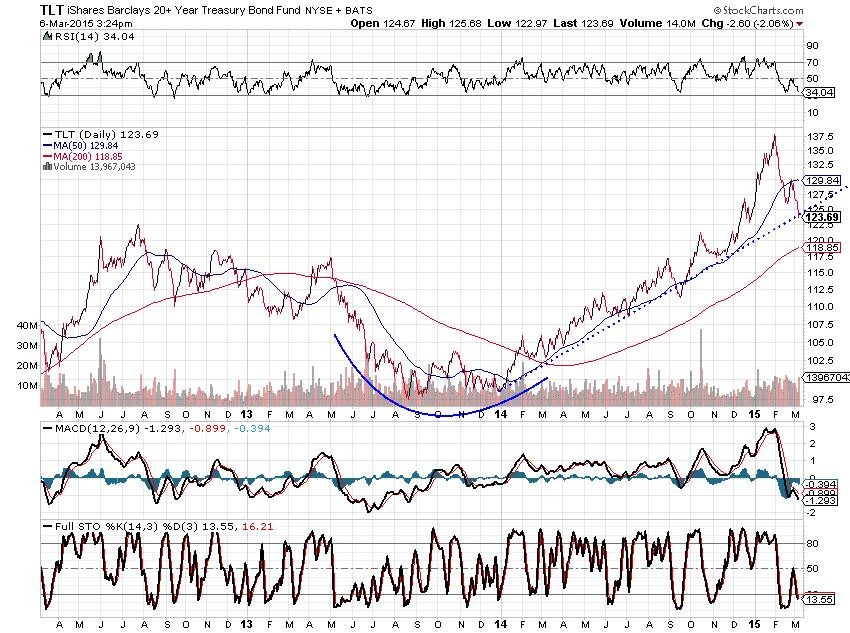STREETTALK LIVE The Daily XChange Market Rallies As Expected
Post on: 1 Май, 2015 No Comment

For the last several weeks in our weekend missive we have been recommending increasing equity exposure as the market consolidated post the QE3 announcement. In this past weekend’s missive we specifically stated: The market has continued to correct over the last week despite the Fed’s QE3 program.
The market has now corrected to initial support levels that we have discussed in recent weeks giving us an opportunity to add additional exposure [to portfolios]. On a short term basis — the market has gotten much oversold as shown in the chart below.
However, on a longer term basis we still have all of our buy signals in place currently which requires us to increase our exposure on pullbacks. With the market as oversold as it is currently — it is very likely that the market will bounce in the coming week ahead.
This week the market has indeed rallied as we discussed and has cleared initial moving average resistance levels. This rally is rapidly approaching the upper levels of the current consolidation range. The current target for the rally is now 1460. In order for this rally to continue it will be important for the market to clear this resistance level.
There Are Risks
While we have increased equity exposure in portfolios in anticipation of the seasonally strong time of year — a rally from current levels is not without risks.
While we have discussd the impacts of the fiscal cliff. a resurgence of the Eurozone crisis, and the impact from the Euroarea recession and slowdown in China — what concerns us most currently is the degradation in the quality of earnings, and most particularly, topline sales.
As we discussed this past weekend: The more we move into the third quarter earning season — the more I am becoming worried about the fundamental backdrop of the markets. I have mentioned in the past about the new equity/fixed income portfolios that we have launched in our shop which are driven by both fundamental momentum and technical analysis to be more sensitive to the Central Bank interventions.
Two months ago when we ran our initial basic screen, which is comprised of 9 fundamental factors, against the total stock market universe there were over 300 candidates to choose from. One month ago that universe had shrunk to roughly 200 candidates. As of this past Friday we are below 100 candidates. Think about that for a moment. Out of a total universe of over 11,000 potential investments – less than 100 cleared a very basic screen of 9 fundamental factors.
Furthermore, that deterioration in the number of candidates occurred as the price of the market was declining over the last couple of weeks. (Theoretically, as price falls in the market valuation ratios should improve increasing the number of candidates.)
What this is clearly telling us, and as supported by recent outlooks from companies like Caterpillar, Home Depot, UPS, FedEx, Intel, AMD, Norfolk Southern and others, is that earnings and fundamentals are deteriorating. This deterioration in the “E” makes further gains in the price of the market, “P”, much more tentative.
As we discussed a few weeks ago, the price to earnings ratio (P/E) has advanced by two full points in just the last quarter as earnings have deteriorated. This detachment of the price from the underlying earnings will eventually revert. This reversion process is generally just as extreme to the downside as it was to the upside.
The chart below shows the extent of forward earnings multiple expansions just between June 30, 2012 and this past week.
The sharp decline in reported earnings estimates (the “E”) as prices remain near annual highs is extremely concerning. The next chart shows the explosion in valuations since January 2012 as analysts continue to slash forward estimates while continuing to promote how ‘cheap’ owning stocks are.

As we discussed last week in our report titled “What Wholesale Trade Can Tell Us About 3Q Earnings ” we stated that: ‘Given the enduring hard times, you might think that corporations have used up their cash since 2009. But real pretax corporate profits have soared, from less than $1.5 trillion in 2009 to $1.9 trillion in 2010 and almost $2 trillion in 2011, data from the Federal Bureau of Economic Analysis shows.
There is a very interesting, albeit disturbing, contradiction in the statement above. The initial assumption would be that if companies are having a hard time putting cash to work, because there is less demand for products and services, this would infer lower revenues. The chart shows the change in reported earnings and sales (top line revenue) for the S&P 500. Since the beginning of 2009 the total growth in sales per share has been 21% as compared to a 207% increase in reported earnings. This confirms our assumption that lower revenues, and demand, is behind the historically high levels of corporate ‘cash hoarding.’ However, if revenue growth is weak then how are real pretax corporate profits soaring? The answer comes down cost controls and productivity.’
The blue callout in the chart above shows that the percentage change in earnings and sales in the second quarter of 2012 is just barely above zero. The table shows the companies in the S&P 500 that have reported so far for the third quarter of 2012.
As you can see the negative changes in year-over-year sales and earnings greatly outweigh the number of positive ones.
This deterioration in sales and earnings alone should be enough to concern you. Historically, when prices have become detached from the underlying trend of earnings growth — it has normally been closer to the peak of bull market advances and not the beginning of the next upward advance.
However, from a technical perspective, the markets also exhibiting conditions that tend to coincide with market tops as well. The chart below shows the market from a weekly perspective over the last three years.
Each time the market has reached these levels of over bought conditions in the past it has been indicative of a market topping process.
While we expect the market to benefit from the Fed’s bond buying program it is important to understand the risk of what might go wrong. The is a very high level of complacency amongst investors in general at the moment as the common belief is that QE will drive asset prices higher, Congress will solve the debt ceiling and the U.S. can stand strong in the face of a global slow down. That is a pretty tall wish list and any one of those risks, much less a combiniation, could lead to a sharp reversion in prices.














